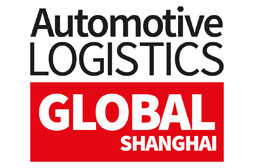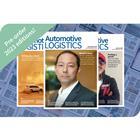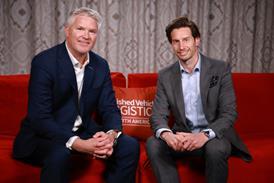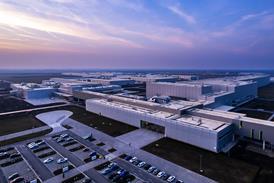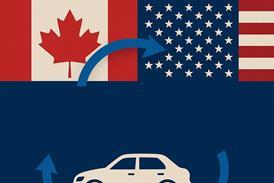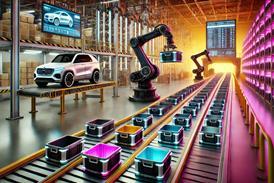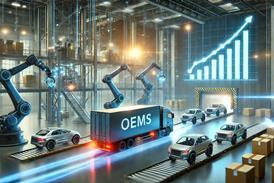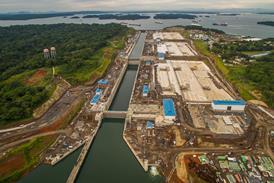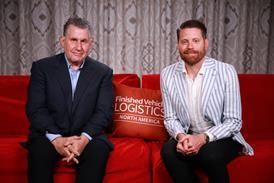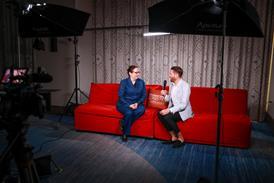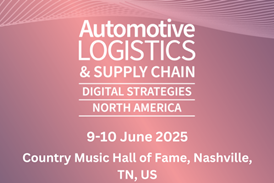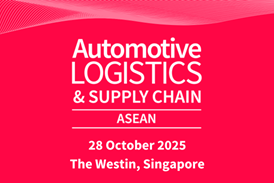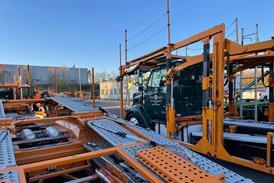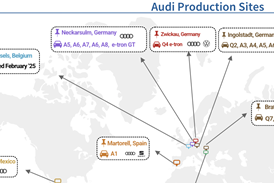Jonathan Ward
Contact info
 Feature
FeatureWhy all eyes are on Israel for AI
In the race to perfect autonomous driving, Israel has proven to be a hotspot of technological innovation – driven, in part, by its military expertise and surveillance tools
 Feature
FeatureThe long way home
For inbound automotive supply chains, returnable packaging just makes sense. No carmaker wants to spend money on wood, paper and cardboard again and again, only to have to fork out straight away for costly waste disposal.
 Feature
FeatureNavigating uncharted waters
The real-world impact on Maersk’s business was immediate. A number of port terminals operated by the group’s APM Terminals division were forced to close, and when they reopened, staff had to do their best to manage operations the old-fashioned way: using pens and paper.
 Feature
FeatureRising inventory: Stock lots
In any retail business, inventory management is a delicate balancing act. Hold too little and frustrated customers will be forced to shop elsewhere; but piling stock on your shelves puts a strain on working capital and if what you bought isn’t what customers want, you have little choice but to ...

 Feature
FeatureA supplier renaissance
At the tail end of the 20th century, the automotive supply sector was a tough business to be in. The world’s carmakers had long since decided that the sprawling, vertically integrated manufacturing models of the past should be abandoned. Major OEMs spun out their component divisions as separate entities, narrowing ...
 Feature
FeatureOnline vehicle sales: ACES high as dealers face a new game
Once upon a time, interaction between carmakers and their customers happened in one place: the dealership. Dealer showrooms were where customers learned about products, chose a car and parted with their cash. Once a customer took possession of the vehicle, he was likely to return to the dealer for service ...
 Feature
FeatureEV supply chains: Shifting currents
Mass-market electric vehicles are coming. Global plug-in sales grew 42% in 2016, reaching to 773,600 units.
 Feature
FeatureAdvanced analytics: Boiling down the benefits of big data
In a data-rich world, could advanced analytical techniques be the key to higher performance in the automotive supply chain?
 Feature
FeatureBrexit and shipping: Playing a game of wait and sea
A country’s ports and the shipping lines that serve them are at the front line of fluctuations in international trade. So is the UK sector bracing itself for a Brexit-induced storm?
 Feature
FeatureInventory inversed
Changes in technology, economics and attitudes are driving a resurgence of interest in vendor managed inventory programmes among automotive manufacturers
 Feature
FeatureMore than a name to change...
What do automotive companies mean by ‘logistics’ and ‘supply chain’? Automotive Logistics looks at whether OEM and supplier organisations reflect the sector’s changing demands and technology
 Feature
FeatureOnline marketplace: Control-alt-compete
Online marketplaces have transformed the way consumers find, choose and buy many products and services. Could they realistically do the same for automotive logistics?

 Feature
FeatureTo protect and serve
The conflicting demands of part protection, transport efficiency and line-side access often require innovative solutions from packaging designers
 Feature
FeatureShipping focus case study: A crow’s nest view of the supply chain
Complex, multimodal, multi-activity supply chains call for smart management systems. For WWL, that has meant a decade-long partnership with UK software specialist ProAct International
 Feature
FeatureYards apart
Wastefully expensive lots of inventory, or a vital link in the finished vehicle logistics chain? Operators are investing in technology and process innovations to make storage yards work harder.
 Feature
FeatureWhen supply is a close run thing
Carmakers are showing a renewed interest in local supply networks, but do the benefits of supplier proximity balance the costs for both sides, or is there a middle distance to be found for a win-win?
 Feature
FeatureOutsourcing's thin grey line
The boundary between outsourced supply chain and in-house manufacturing is moving all the time. Where should carmakers draw the line?
